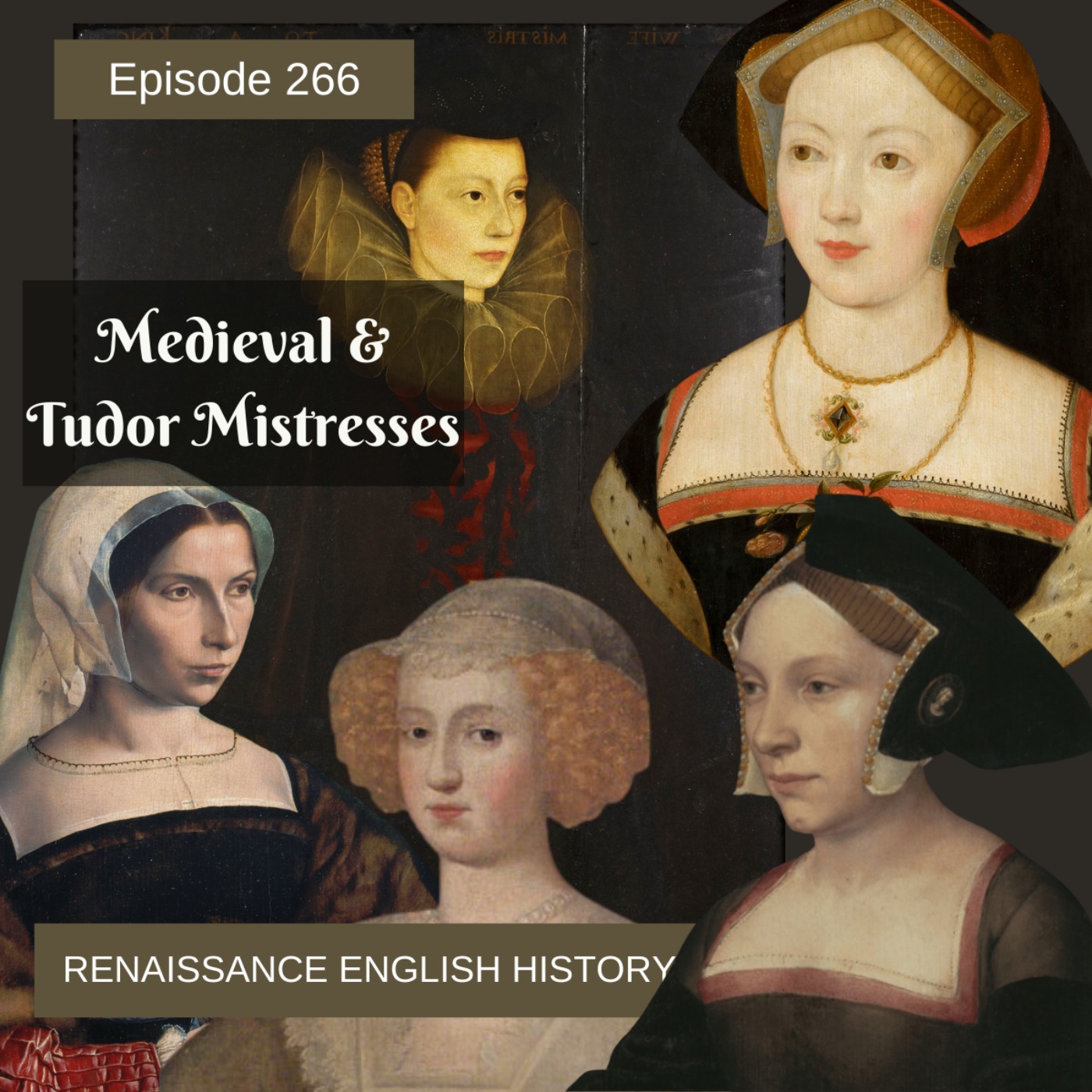
Episode 266: Medieval and Tudor Mistresses

Renaissance English History Podcast: A Show About the Tudors
Deep Dive
What role did royal mistresses play in medieval and Tudor England?
Royal mistresses wielded significant influence in politics, court intrigue, and culture. Though not officially recognized, their relationships with powerful men granted them access to wealth and a voice in decisions that shaped kingdoms. They could advocate for allies, secure patronage, and mediate disputes, but their positions were precarious, tied directly to the king's affection.
How did Alice Perrers gain and lose her influence at court?
Alice Perrers entered the royal court through service to Queen Philippa and became the mistress of Edward III. She amassed immense wealth, including 56 manors, and used her position to manipulate court proceedings. However, her dominance made her unpopular, and in 1376, she was accused of corruption, banished, and her properties confiscated. She later regained some lands after Edward's death.
What was Jane Shore's legacy as Edward IV's mistress?
Jane Shore, known for her intelligence and charm, used her influence to plead for mercy on behalf of those who had fallen out of favor, earning a reputation for generosity. She saved Eton College from disestablishment, a legacy remembered in the Jane Shore Society. After Edward's death, she faced public humiliation and imprisonment but survived into relative obscurity.
Why is Catherine Swynford considered a pivotal figure in English history?
Catherine Swynford's relationship with John of Gaunt produced the Beaufort children, who were legitimized by the Pope. Her great-grandson, Henry VII, founded the Tudor dynasty, and her descendants include every English and British monarch from the Tudors onward. Her legacy endures as the matriarch of a lineage that shaped England's destiny.
What was the significance of Bessie Blount's relationship with Henry VIII?
Bessie Blount was the mother of Henry VIII's only acknowledged illegitimate child, Henry Fitzroy, born in 1519. Fitzroy's birth demonstrated Henry's ability to produce healthy male heirs, a significant point during Catherine of Aragon's repeated pregnancy losses. Bessie's relationship with Henry lasted longer than most of his extramarital affairs, and her son was briefly considered as a potential heir.
How did Mary Boleyn's life differ from her sister Anne's?
Mary Boleyn, overshadowed by her sister Anne, was rumored to have been the mistress of both Francis I of France and Henry VIII. Unlike Anne, who refused to become Henry's mistress and later became queen, Mary's relationship with Henry brought her little lasting benefit. After her fall from favor, she lived quietly, marrying William Stafford and fading from the historical record.
What cultural shift is reflected in Elizabeth Vernon's story?
Elizabeth Vernon's relationship with the Earl of Southampton and their secret marriage in 1598 marked a shift in attitudes toward mistresses in Elizabethan England. Unlike earlier mistresses tied to monarchs, her story involved a prominent nobleman, reflecting the era's emphasis on chastity and the declining role of royal mistresses in court politics.
How did mistresses navigate the risks of court politics?
Mistresses used charm, intelligence, and connections to advocate for allies and secure patronage, but their positions were precarious. Once their relationships ended, they often faced vilification, loss of wealth, or exile. Many, like Alice Perrers and Jane Shore, were used as scapegoats in political conflicts or targeted by rival factions, highlighting the dangers of their roles.
Shownotes Transcript
About a year ago I did an episode on Royal Mistresses that seemed to be pretty popular, and so we're back with a look at some of the most prominent medieval and Tudor mistresses with love stories that had happy endings (Katherine Swynford) to ones that didn't so much (Jane Shore) and even some later Elizabethan mistresses.
Thanks for listening, and remember you can still hop into Yuletide with the Tudors
https://www.englandcast.com/yuletide-with-the-tudors/)
Hosted on Acast. See acast.com/privacy) for more information.